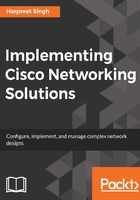
上QQ阅读APP看书,第一时间看更新
Advantages of network lifecycle approach
The network lifecycle approach provides several key benefits aside from keeping the design process organized. Some of the benefits of using a structured lifecycle approach to network design are as follows:
- Lowering the total cost of network ownership: Businesses have always used the total cost of ownership (TCO) approach to take decisions. With IT becoming more and more relevant to business today, their IT decisions have to follow the approach of TCO rather than a pure capital expenditure (CAPEX) approach. This means that the operational expenses (OPEX) that have to be incurred while running and maintaining the network are also an important factor in the overall network approach. The network lifecycle approach helps in lowering the TCO by:
- Identifying, evaluating, and choosing the right technology options.
- Developing and documenting a design that is aligned with the business/service requirements.
- Building implementation plans that can minimize the risk of implementation, thus avoiding cost and time overruns.
- Planning for the operations as an integral part of network design so as to improve the operational efficiency by choosing the right set of tools, and operational skills required.
- Increasing services uptime: Downtime or outages are the most dreaded terms in network operations, as they causes service disruption resulting in loss of revenue and goodwill. A network lifecycle approach can help reduce downtime by:
- Identifying the network elements that need to be highly available for service availability, and designing the network for redundancy of such elements.
- Planning the operational skills required for the network, and ensuring that the Network Operations Center (NOC) staff has the right skills.
- Improving business agility: As businesses are faced with dynamic market trends, IT needs to be able to support business quickly and efficiently. This agility means that the network should have the ability to make changes to the way existing services are delivered on the network, or the ability to quickly add new services to the network based on the business requirements. A lifecycle approach helps provide this agility to the network by:
- Capturing the business and technology requirements and their dependencies.
- Developing detailed designs for each service at a block level and at a configuration level such that new services can be added without impacting the existing services.
- Defining the horizontal and vertical scaling options for the network design during the design phase itself so that capacity can be quickly added to the network when required by the applications.
- Creating operational run books and bringing in operational efficiencies through the proper use of tools and the right resource skills.
The PPDIOO approach consists of six phases as depicted in Figure 14, which are described as shown in the following diagram:

Figure 14: The PPDIOO approach